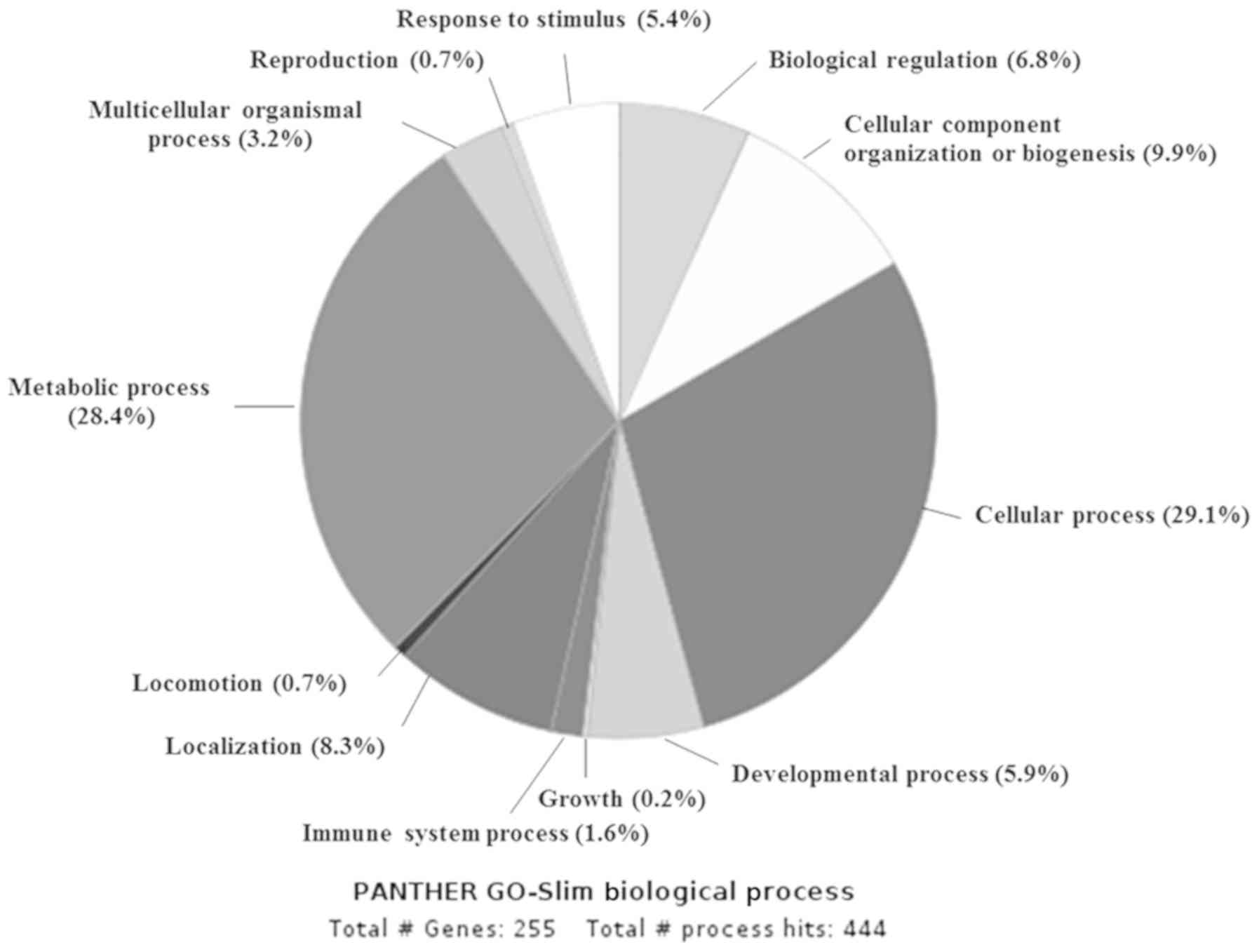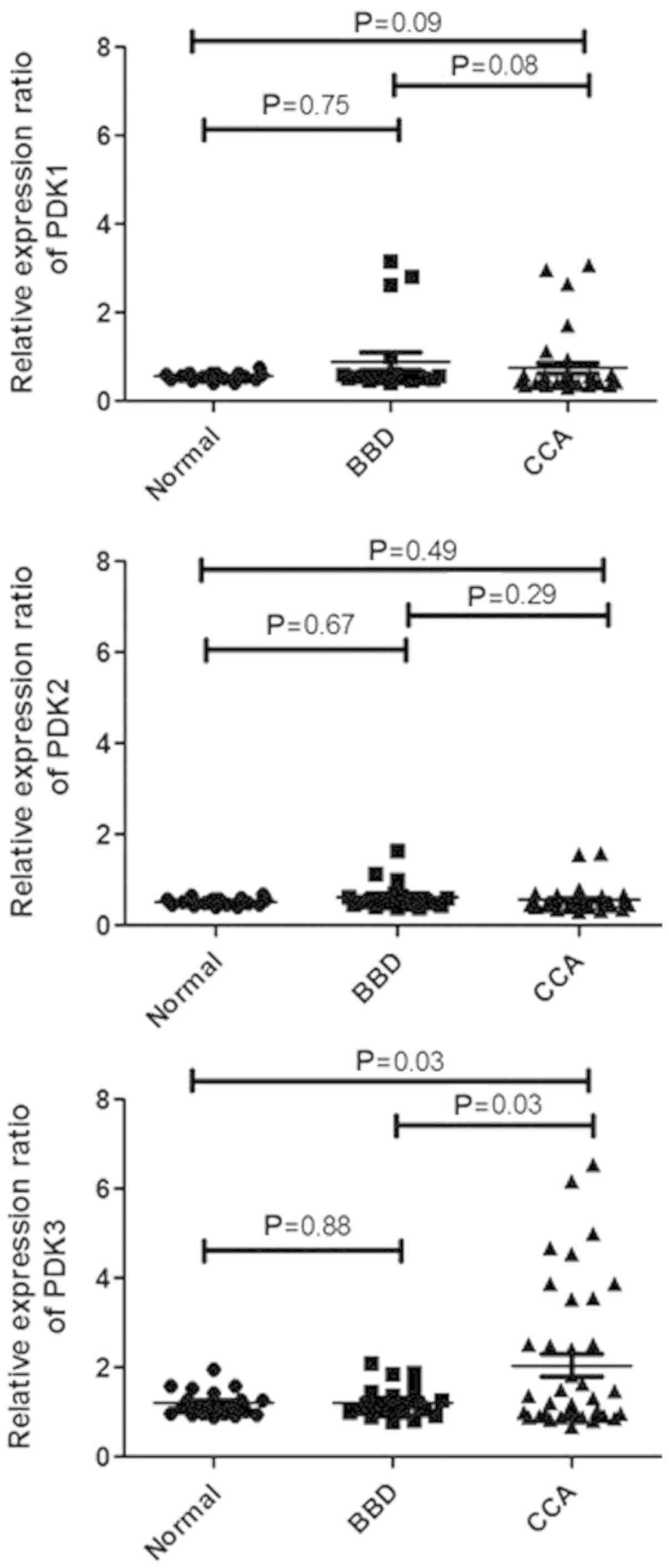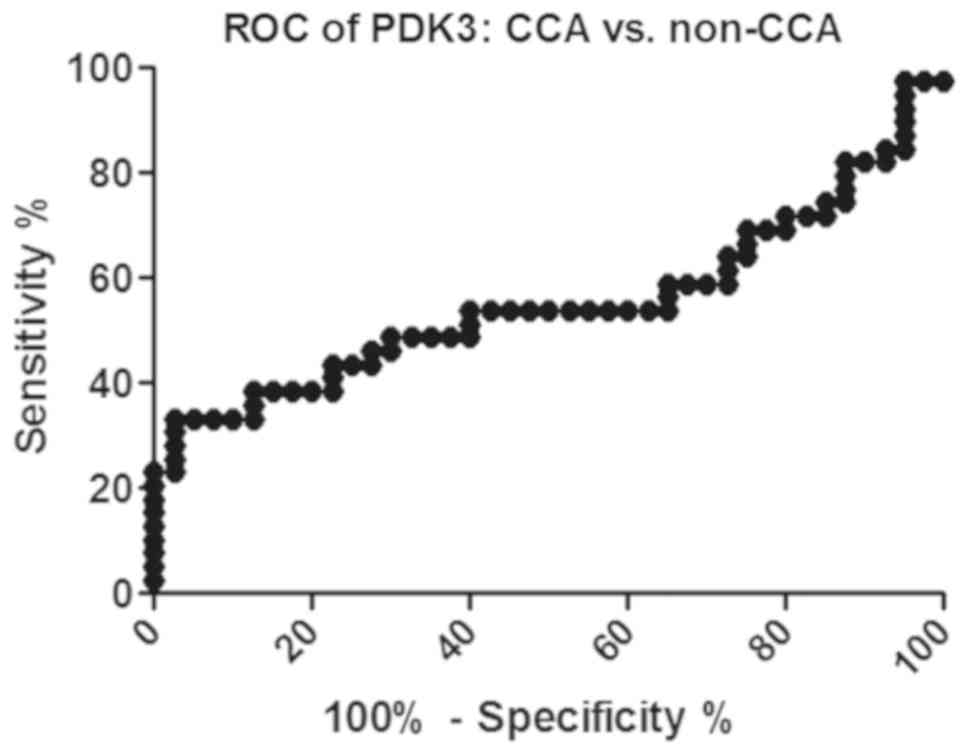|
1
|
Khan SA, Toledano MB and Taylor-Robinson
SD: Epidemiology, risk factors, and pathogenesis of
cholangiocarcinoma. HPB (Oxford). 10:77–82. 2008. View Article : Google Scholar : PubMed/NCBI
|
|
2
|
Sripa B, Brindley PJ, Mulvenna J, Laha T,
Smout MJ, Mairiang E, Bethony JM and Loukas A: The tumorigenic
liver fluke Opisthorchis viverrini-multiple pathways to cancer.
Trends Parasitol. 28:395–407. 2012. View Article : Google Scholar : PubMed/NCBI
|
|
3
|
Rizvi S and Gores GJ: Pathogenesis,
diagnosis, and management of cholangiocarcinoma. Gastroenterology.
145:1215–1229. 2013. View Article : Google Scholar : PubMed/NCBI
|
|
4
|
Pattanapairoj S, Silsirivanit A, Muisuk K,
Seubwai W, Cha'on U, Vaeteewoottacharn K, Sawanyawisuth K,
Chetchotsak D and Wongkham S: Improve discrimination power of serum
markers for diagnosis of cholangiocarcinoma using data mining-based
approach. Clin Biochem. 48:668–673. 2015. View Article : Google Scholar : PubMed/NCBI
|
|
5
|
Wongkham S and Silsirivanit A: State of
serum markers for detection of cholangiocarcinoma. Asian Pac J
Cancer Prev. 13 (Suppl):S17–S27. 2012.
|
|
6
|
Chua-On D, Proungvitaya T, Techasen A,
Limpaiboon T, Roytrakul S, Wongkham S, Wongkham C, Somintara O,
Sungkhamanon S and Proungvitaya S: High expression of
apoptosis-inducing factor, mitochondrion-associated 3 (AIFM3) in
human cholangiocarcinoma. Tumour Biol. 37:13659–13667. 2016.
View Article : Google Scholar : PubMed/NCBI
|
|
7
|
Icard P and Lincet H: A global view of the
biochemical pathways involved in the regulation of the metabolism
of cancer cells. Biochim Biophys Acta. 1826:423–433.
2012.PubMed/NCBI
|
|
8
|
Saunier E, Benelli C and Bortoli S: The
pyruvate dehydrogenase complex in cancer: An old metabolic
gatekeeper regulated by new pathways and pharmacological agents.
Int J Cancer. 138:809–817. 2016. View Article : Google Scholar : PubMed/NCBI
|
|
9
|
Bowker-Kinley MM, Davis WI, Wu P, Harris
RA and Popov KM: Evidence for existence of tissue-specific
regulation of the mammalian pyruvate dehydrogenase complex. Biochem
J. 329:191–196. 1998. View Article : Google Scholar : PubMed/NCBI
|
|
10
|
Mi H, Poudel S, Muruganujan A, Casagrande
JT and Thomas PD: PANTHER version 10: Expanded protein families and
functions, and analysis tools. Nucleic Acids Res. 44:D336–D342.
2016. View Article : Google Scholar : PubMed/NCBI
|
|
11
|
Dupont WD and Plummer WD Jr: Power and
sample size calculations. A review and computer program. Control
Clin Trials. 11:116–128. 1990. View Article : Google Scholar : PubMed/NCBI
|
|
12
|
Ma H, Lu Y, Marchbanks PA, Folger SG,
Strom BL, McDonald JA, Simon MS, Weiss LK, Malone KE, Burkman RT,
et al: Quantitative measures of estrogen receptor expression in
relation to breast cancer-specific mortality risk among white women
and black women. Br Cancer Res. 15:R902013. View Article : Google Scholar
|
|
13
|
Tan LD, Xu YY, Yu Y, Li XQ, Chen Y and
Feng YM: Serum HER2 level measured by dot blot: A valid and
inexpensive assay for monitoring breast cancer progression. PLoS
One. 6:e187642011. View Article : Google Scholar : PubMed/NCBI
|
|
14
|
Vander Heiden MG, Cantley LC and Thompson
CB: Understanding the Warburg effect: The metabolic requirements of
cell proliferation. Science. 324:1029–1033. 2009. View Article : Google Scholar : PubMed/NCBI
|
|
15
|
Jeoung NH: Pyruvate dehydrogenase kinases:
Therapeutic targets for diabetes and cancers. Diabetes Metab J.
39:188–197. 2015. View Article : Google Scholar : PubMed/NCBI
|
|
16
|
Hur H, Xuan Y, Kim YB, Lee G, Shim W, Yun
J, Ham IH and Han SU: Expression of pyruvate dehydrogenase kinase-1
in gastric cancer as a potential therapeutic target. Int J Oncol.
42:44–54. 2013. View Article : Google Scholar : PubMed/NCBI
|
|
17
|
Lim HY, Yip YM, Chiong E, Tiong HY,
Halliwell B, Esuvaranathan K and Wong KP: Metabolic signatures of
renal cell carcinoma. Biochem Biophys Res Commun. 460:938–943.
2015. View Article : Google Scholar : PubMed/NCBI
|
|
18
|
Lu CW, Lin SC, Chien CW, Lin SC, Lee CT,
Lin BW, Lee JC and Tsai SJ: Overexpression of pyruvate
dehydrogenase kinase 3 increases drug resistance and early
recurrence in colon cancer. Am J Pathol. 179:1405–1414. 2011.
View Article : Google Scholar : PubMed/NCBI
|
|
19
|
Roh JL, Park JY, Kim EH, Jang HJ and Kwon
M: Activation of mitochondrial oxidation by PDK2 inhibition
reverses cisplatin resistance in head and neck cancer. Cancer Lett.
371:20–29. 2016. View Article : Google Scholar : PubMed/NCBI
|
|
20
|
Gudi R, Bowker-Kinley MM, Kedishvili NY,
Zhao Y and Popov KM: Diversity of the pyruvate dehydrogenase kinase
gene family in humans. J Biol Chem. 270:28989–28994. 1995.
View Article : Google Scholar : PubMed/NCBI
|
|
21
|
Lu CW, Lin SC, Chen KF, Lai YY and Tsai
SJ: Induction of pyruvate dehydrogenase kinase-3 by
hypoxia-inducible factor-1 promotes metabolic switch and drug
resistance. J Biol Chem. 283:28106–28114. 2008. View Article : Google Scholar : PubMed/NCBI
|
|
22
|
Petersen TN, Brunak S, von Heijne G and
Nielsen H: SignalP 4.0: Discriminating signal peptides from
transmembrane regions. Nat Methods. 8:785–786. 2011. View Article : Google Scholar : PubMed/NCBI
|
|
23
|
Sombattheera S, Proungvitaya T, Limpaiboon
T, Wongkham S, Wongkham C, Luvira V and Proungvitaya S: Total serum
bile acid as a potential marker for the diagnosis of
cholangiocarcinoma without jaundice. Asian Pac J Cancer Prev.
16:1367–1370. 2015. View Article : Google Scholar : PubMed/NCBI
|
|
24
|
Janan M, Proungvitaya S, Limpaiboon T,
Proungvitaya T, Roytrakul S, Wongkham C, Jearanaikoon P, Chur-in S
and Wongkham S: Serum adhesion molecule-1 (ICAM-1) as a potential
prognostic marker for cholangiocarcinoma patients. Asian Pac J
Cancer Prev. 13 (Suppl):S107–S114. 2012.
|














